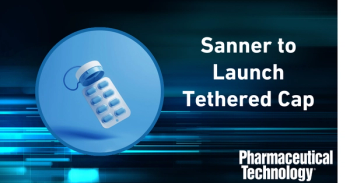
Pharmaceutical Technology Europe
- Pharmaceutical Technology Europe-07-01-2010
- Volume 22
- Issue 7
The Power Of X-Ray Analysis
X-ray powder diffraction (XRPD) is a versatile, non-destructive technique that reveals detailed information about pharmaceuticals.
The full version of this counterfeiting feature can be read in the July issue of our digital magazine: http://www.pharmtech.com/ptedigital0710
X-ray powder diffraction (XRPD) is a versatile, non-destructive technique that reveals detailed information about the chemical composition and crystallographic structure of pharmaceuticals. As such, it can clearly distinguish between tablets on the basis of type and amount of API (Figure 1), crystal structure of the API and/or composition of excipients. Importantly, because the technique uses X-rays, measurements can be made with the tablets in their original and intact packaging (Figure 2).
Dr Detlef Beckers
The recent introduction of the world's first 3D detector for use in an XRPD system (by PANalytical) brings further insight. Now, computed tomography (CT) images of the tablet under test can be generated in the same instrument as the diffraction data is collected. This allows the non-invasive analysis of size, shape and inner microstructure of tablets giving additional information about the production processes involved (Figure 3).
Figure 1
How does it detect counterfeits?
Although XRPD is already a standard tool for analysing illicit drugs and is used extensively in criminal investigations, it is not yet embedded in the pharmaceutical industry as a standard analytical technique for detecting counterfeit medicines. However, there are many inherent qualities of the method for this application. XRPD allows a fast analysis of the complete composition of the tablet, including the excipient mixture, polymorphic form and crystallinity of the API. The technique can also non-destructively analyse intact pharmaceutical tablets, without requiring removal from the original blister packaging. This allows a batch of samples to be released for sale if appropriate, or to be retained in the original form for use as an exhibit in a court of law. Furthermore, tablets can be used in subsequent analysis by other methods.
Figure 2
XRPD offers several advantages over other tablet analysis techniques. For instance, traditional wet chemistry methods, such as gas chromatography–mass spectrometry, are time consuming because of the need for sample preparation, and also destroy the physical properties of the tablets. More advanced analytical techniques also have disadvantages. Infrared techniques often have problems with hydrate mixtures because of moisture content and while NIR is often promoted as being easy to use (particularly in the case of portable instruments), a proper evaluation of the resulting spectra requires advanced spectroscopy knowledge. This is particularly the case where NIR tests are conducted through packaging. In this case, so called 'multiplicative scattering' from the packaging may lead to false positives or false negatives. Additionally, an appropriate test set for NIR needs to be built up from dozens of samples and validated on the instrument. These samples also need to be monitored for small changes, which can occur due to variations in humidity, temperature, or differences in particle size, and may impact results.
Figure 3
As with NIR, fourier transform spectroscopy Raman also offers the benefit of being available as a portable instrument — and in my opinion is perhaps the most appropriate of this group of techniques. However, it also suffers from problems with interference and issues with high moisture content samples.
XRPD can easily be transferred from one instrument to another without the need for complex calibrations. It also provides rapid unequivocal analysis where both organic and inorganic materials, and/or components with similar molecular weights, polarities, boiling points and structures, are present.
Use in industry
XRPD is widely used in the pharmaceutical industry; it has moved from being a technology that simply enables pharmaceutical companies to 'tick a box' (by providing the crystal pattern of a drug needed for patent and regulatory approval) to one that meets valuable applications across discovery, development and production control. New-generation XRD instruments that include ultra-fast detectors, and pre-aligned stages and optical components for fast method set up and switching, have made the technique accessible to all. The development of control and analysis software that uses a familiar user interface and supports standard operating procedures has helped to 'demystify' the technique too. Despite its advantages, however, XRPD is not yet widely used for detecting counterfeit medicines, but the pharma industry has a history of broadening the use of any technique that is already established in the laboratory — an XRPD is certainly an available tool in all pharma companies. Additionally, a recent trial in Germany (data not yet published) has already been investigating the use of XRD for the rapid analysis of counterfeit medicines
Many governments and institutions are constantly reviewing new anti-counterfeiting methods and technologies. The European Commission launched a public consultation in 2008 in preparation for a legal proposal to combat counterfeit medicines. Other initiatives are in place around the world, including a major FDA task force that is exploring the use of modern technologies and other measures that will make it more difficult for counterfeit drugs to become integrated into the supply chain. In addition, the WHO established the first global initiative against counterfeit drugs — the International Medical Products Anti-Counterfeiting Taskforce (IMPACT) — in February 2006. IMPACT aims to build coordinated networks to halt the production, trading and selling of fake medicines around the globe. The taskforce comprises a wide variety of international bodies, including non-governmental organisations, enforcement agencies, pharmaceutical manufacturers' associations and drug and regulatory authorities. IMPACT's vision is that all counterfeit drugs will be eradicated from the supply chain by 2015. To accomplish this goal, they are focused on five key areas, including assessing technologies that prevent, deter or detect counterfeit medicinal products.
Industry practice often runs ahead of 'official' recommendations and this may be the case with XRD in counterfeit analysis. However, with so much work going on, I believe it is simply a matter of time before firm technology recommendations emerge.
Dr Detlef Beckers Product Manager Scientific XRPD at PANalytical.
Articles in this issue
over 15 years ago
Regulatory Challenges Are Hindering The Use Of Novel Excipientsover 15 years ago
Advances in film coatingover 15 years ago
Can Pharma Keep Pace With The Counterfeiters?over 15 years ago
Reducing The Number Of Failures In Early Stage Developmentover 15 years ago
US Pharmacopeia Sets Five-Year Goalsover 15 years ago
Data Matrix Barcodes: Print Quality and Popularity On The Upover 15 years ago
Newsover 15 years ago
Counterfeit conundrumNewsletter
Get the essential updates shaping the future of pharma manufacturing and compliance—subscribe today to Pharmaceutical Technology and never miss a breakthrough.





